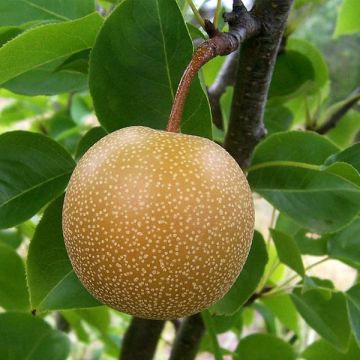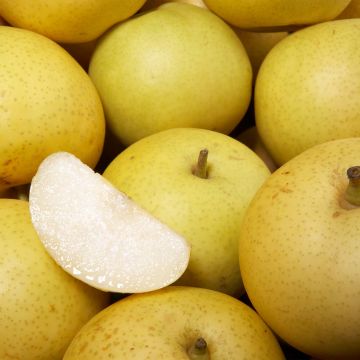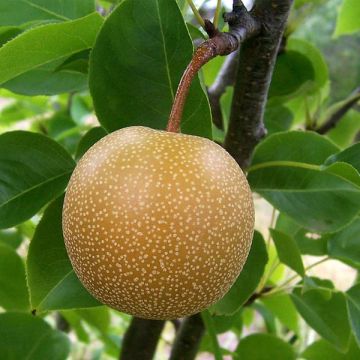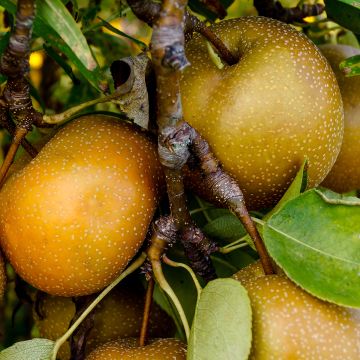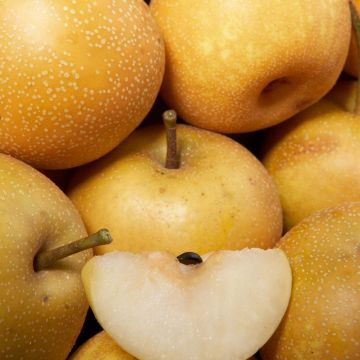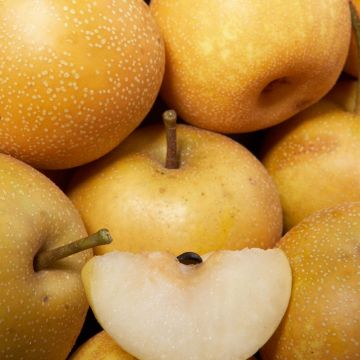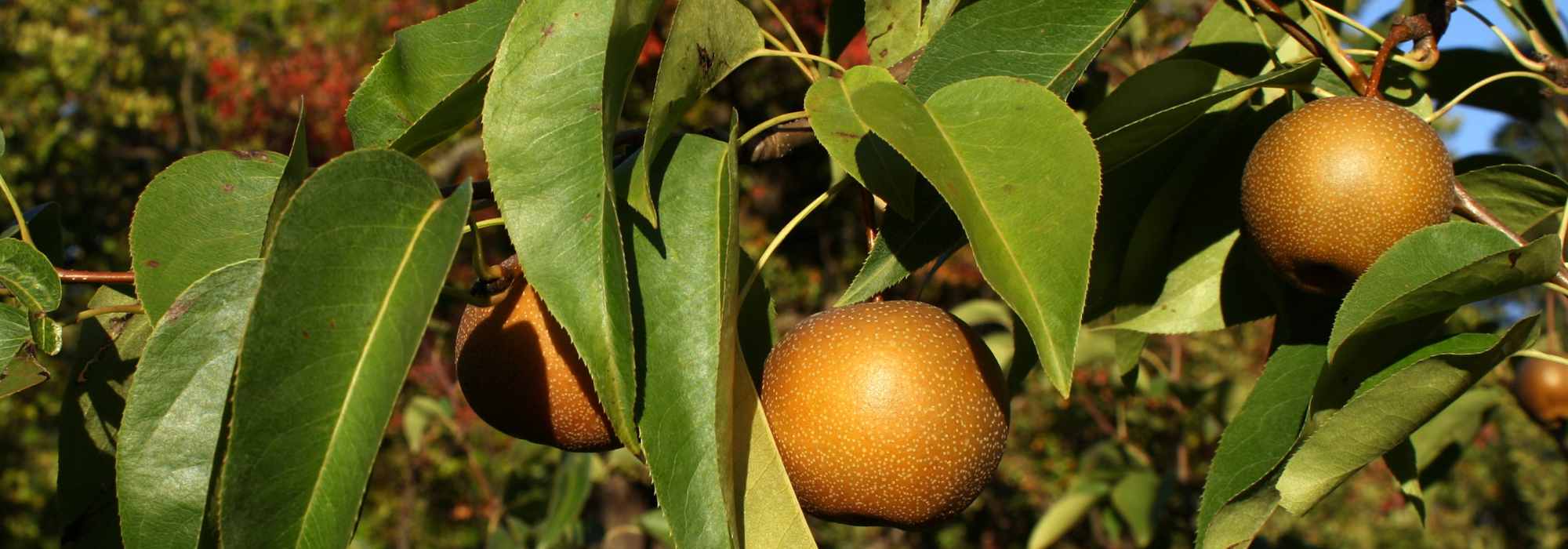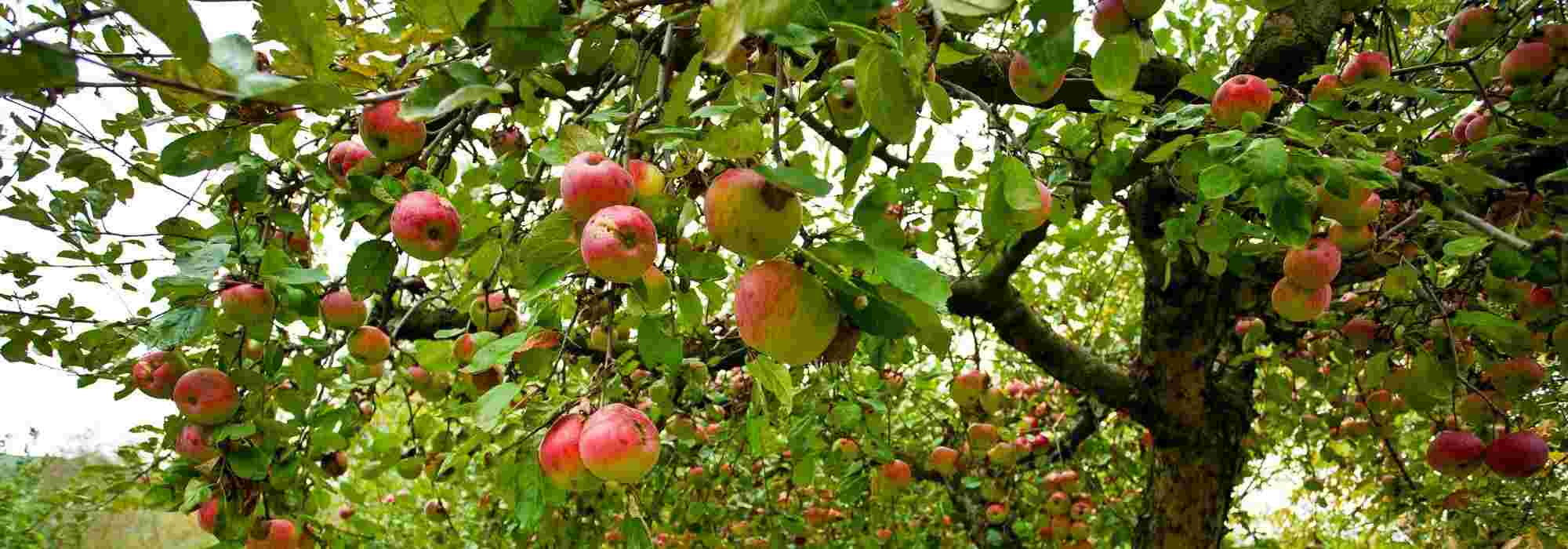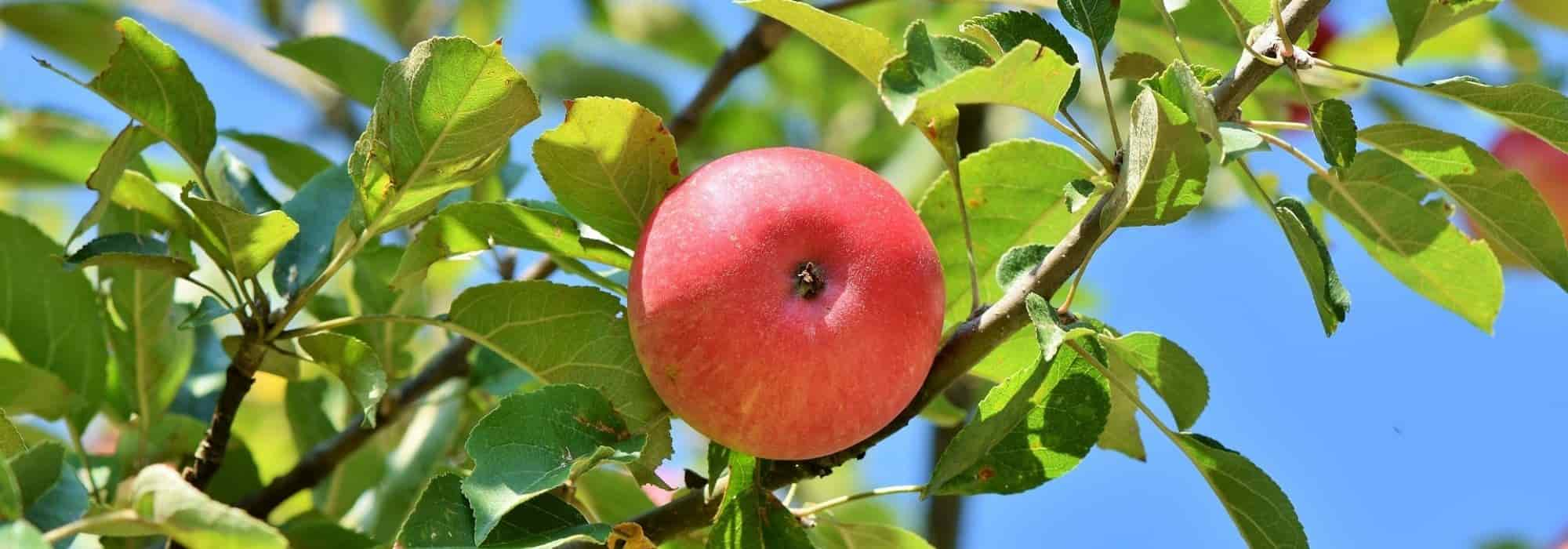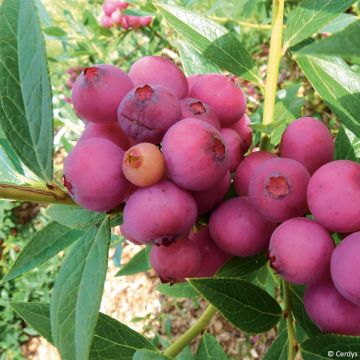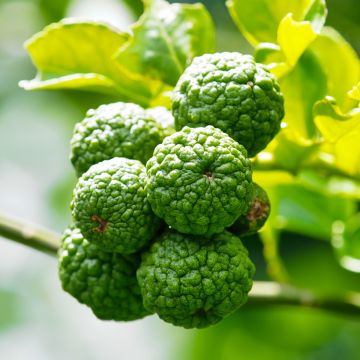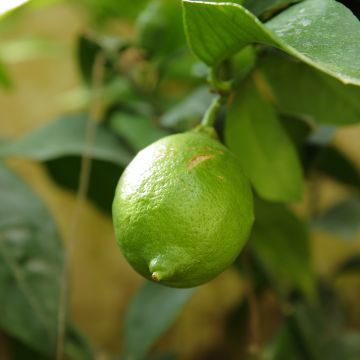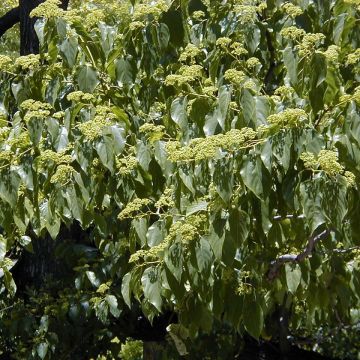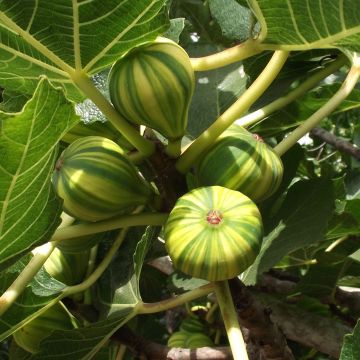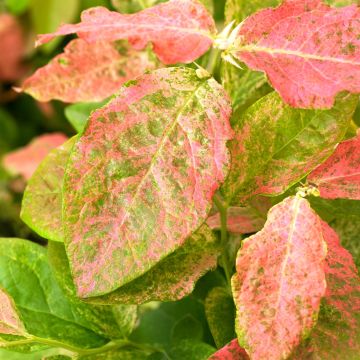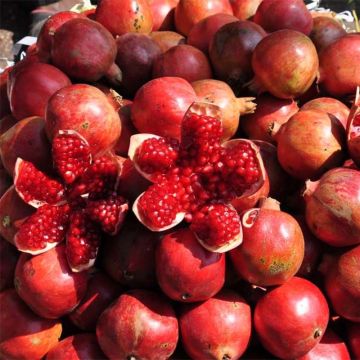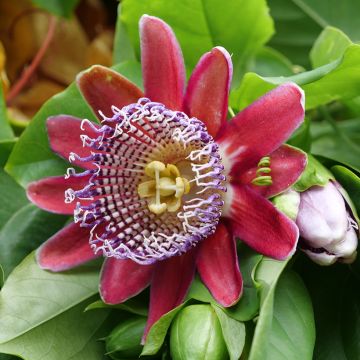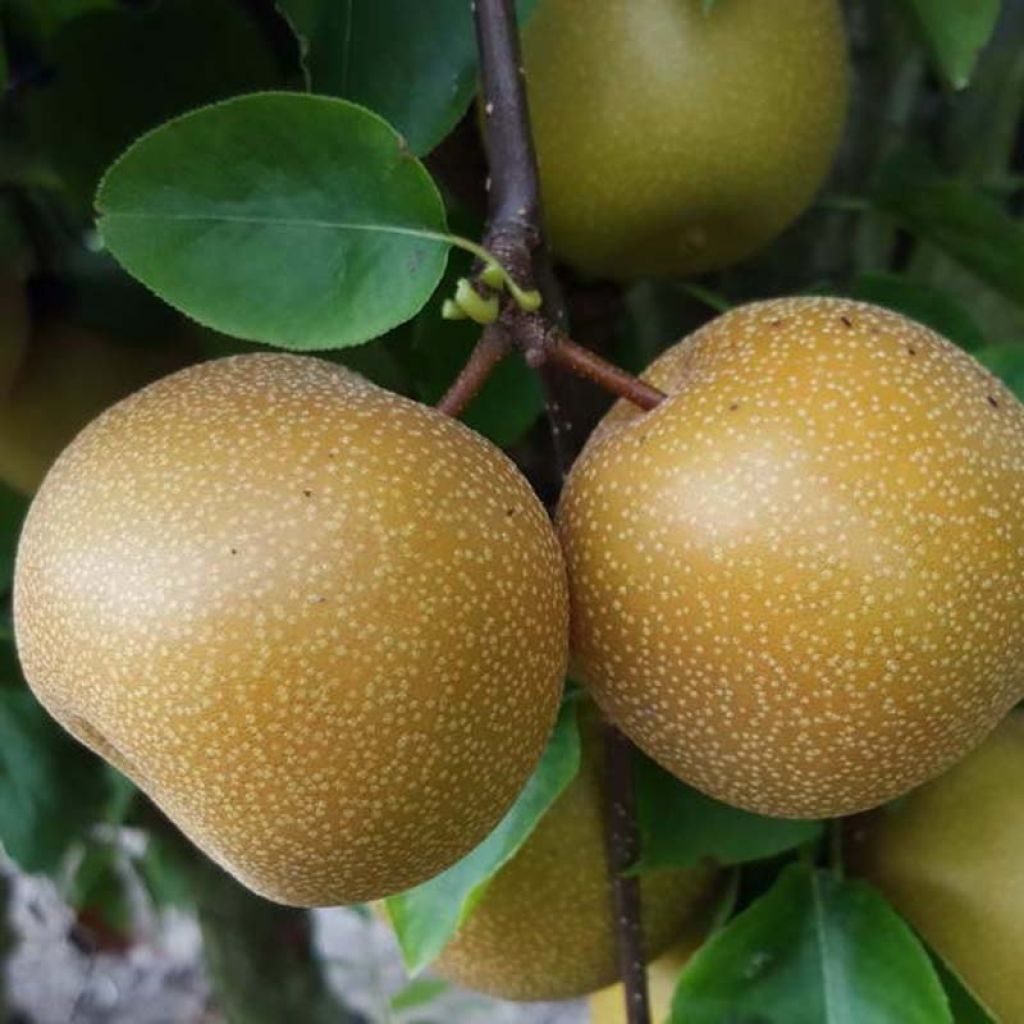

Nashi Nijisseiki - Apple-Pear
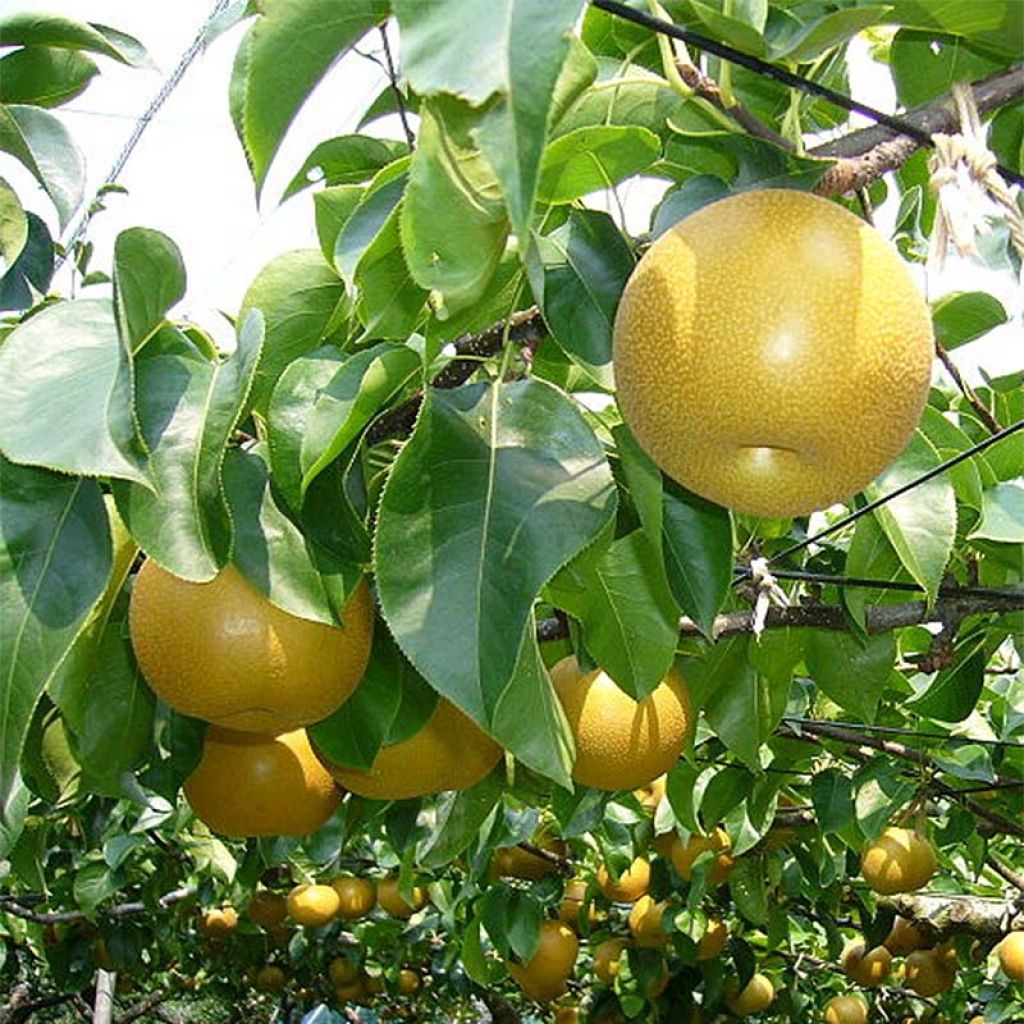

Nashi Nijisseiki - Apple-Pear
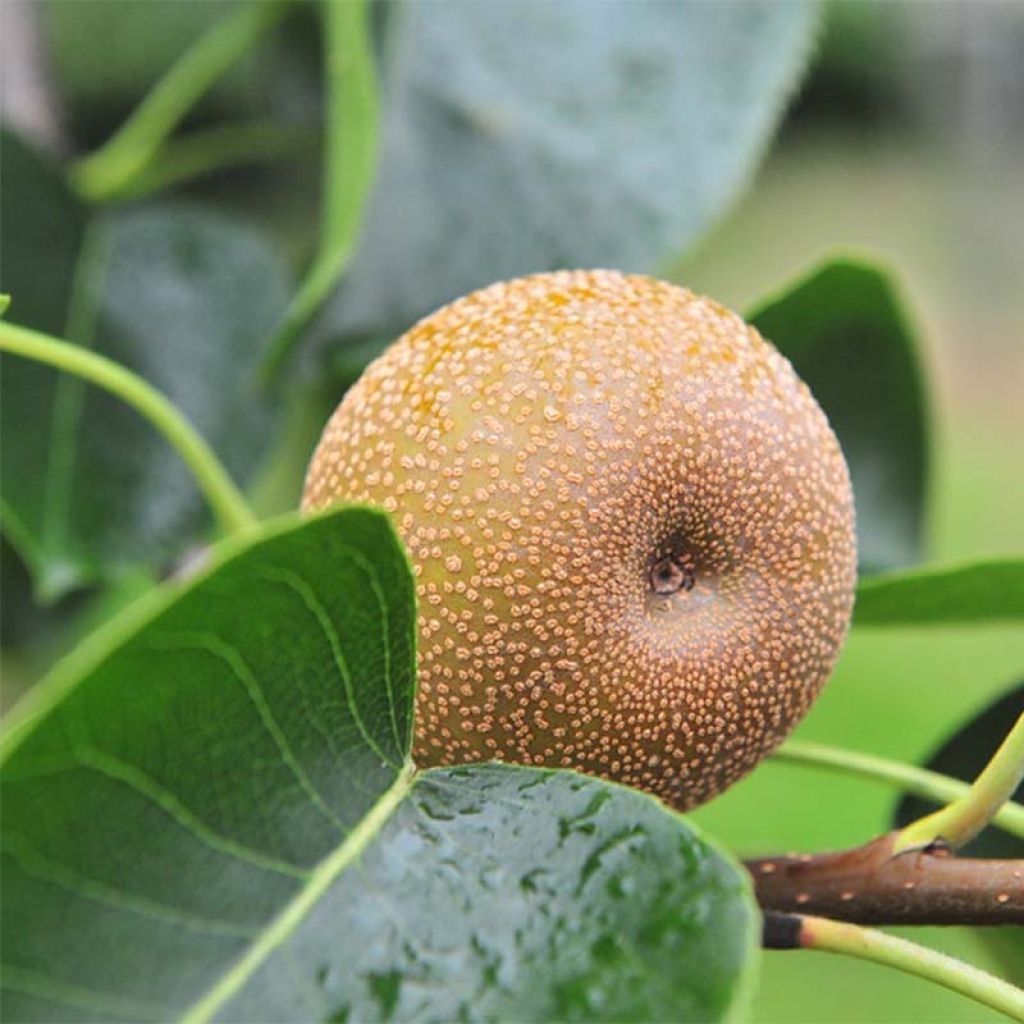

Nashi Nijisseiki - Apple-Pear
Nashi Nijisseiki - Apple-Pear
Pyrus pyrifolia Nijisseiki
Asian Pear, Chinese Pear, Japanese Pear, Korean Pear, Sand Pear, Nashi Pear
Le transporteur a enfin trouvé mon adresse. L'arbre est en pleine forme et ne semble pas avoir souffert du transport. Il sera planté cet après midi. Espérons qu'il donnera des fruits un jour.
jean-françois, 03/09/2020
Special offer!
Receive a €20 voucher for any order over €90 (excluding delivery costs, credit notes, and plastic-free options)!
1- Add your favorite plants to your cart.
2- Once you have reached €90, confirm your order (you can even choose the delivery date!).
3- As soon as your order is shipped, you will receive an email containing your voucher code, valid for 3 months (90 days).
Your voucher is unique and can only be used once, for any order with a minimum value of €20, excluding delivery costs.
Can be combined with other current offers, non-divisible and non-refundable.
Why not try an alternative variety in stock?
View all →This plant carries a 6 months recovery warranty
More information
We guarantee the quality of our plants for a full growing cycle, and will replace at our expense any plant that fails to recover under normal climatic and planting conditions.

Description
The Pyrus pyrifolia 'Nijisseiki' is a variety of Nashi or Asian Pear with medium vigour, productive and self-fertile, which also proves to be a good pollinator for other Nashi. The tree, of fairly rapid growth, bears round fruits, whose yellow flesh is very juicy and sweet. These fruits are sometimes called "apple-pear" since they visually resemble apples while having the texture of pears. Nashi is a hardy bush, both fruit-bearing and ornamental, which requires winter cold to bear fruit. It is preferably planted in autumn or spring, for a harvest starting from late August.
Nashi is not the result of a cross between an apple tree and a pear tree, it is a separate species called Pyrus pyrifolia (synonym Pyrus serotina), closely related to the pear tree. This fruit tree of the Rosaceae family is native to China and Japan, where it grows in medium mountain areas. Cultivated for a long time in Asia, it has recently appeared in Europe. The term Nashi refers to both the bush and the fruit. Quite hardy (up to -19°C (-2.2°F)), this tree is also tolerant of any soil, provided it is deep and fertile enough to ensure good fruiting. Soils that are too dry are also unfavourable for a good harvest.
The 'Nijisseiki' variety quickly forms a small, ramified tree that will reach an average height of 3 m (10ft), with a crown measuring about 2.25 m (7ft) in width. It usually flowers in April, in the form of many small white-pink flowers with 5 petals. These flowers give way, after pollination, to round fruits with thick, amber-yellow skin, speckled with lenticels. The yellow flesh is juicy, sweet and fragrant, with a hint of champagne. Harvest begins in late August, depending on the climate. Pick the fruits when they are ripe as they do not ripen further after harvest. It is a self-fertile variety, whose production can be further improved if there is a William Pear nearby in the garden. Nashi leaves are deciduous, they fall in autumn. They are elongated, finely toothed, slightly larger than those of the Pear tree (10 cm (4in) long), slightly leathery, dark green and shiny in colour.
Once peeled, Nashis are consumed like apples and pears, preferably fresh or for sweet dishes (pies, compotes, crumbles, fruit salads) or sometimes as an accompaniment to meats or cheeses. They keep well in the refrigerator, about 2 to 3 months. Thanks to its beautiful spring flowering and autumn colours, the Asian Pear is also an ornamental tree. In the garden, it can be planted in the orchard, at the back of a flower bed, or in isolation.
Nashi Nijisseiki - Apple-Pear in pictures
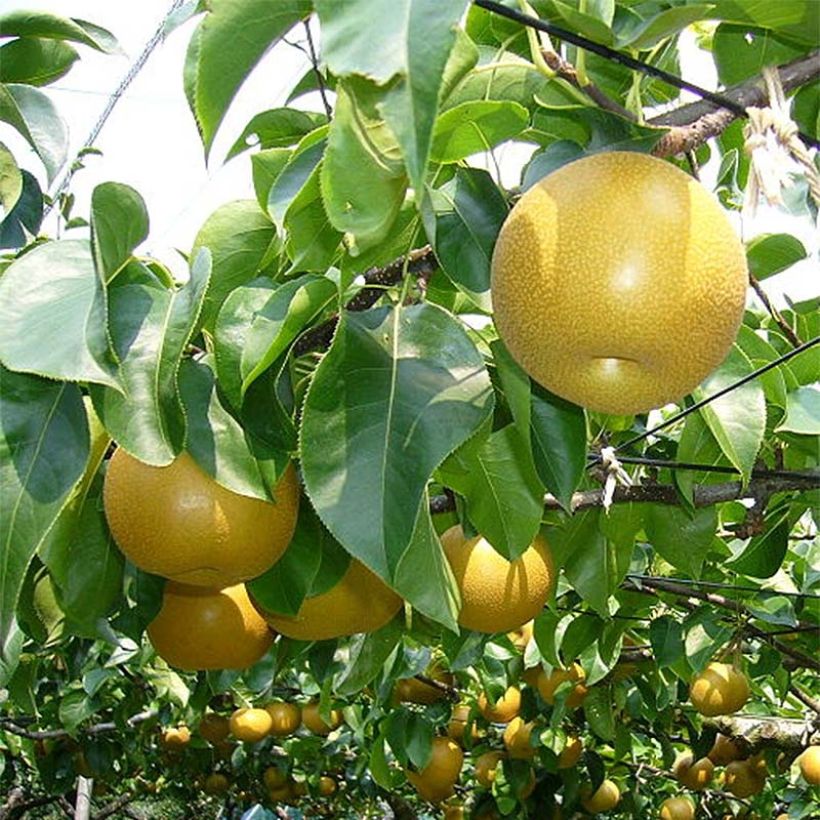



Plant habit
Fruit
Flowering
Foliage
Botanical data
Pyrus
pyrifolia
Nijisseiki
Rosaceae
Asian Pear, Chinese Pear, Japanese Pear, Korean Pear, Sand Pear, Nashi Pear
Cultivar or hybrid
Other Asian Pear trees
View all →Planting and care
Planting Nashi is done in frost-free autumn or winter or in spring with regular watering. Nashi thrives in all types of soil, whether neutral, acidic, or slightly chalky. It appreciates deep, rich, and well-drained soils. Choose a sunny location sheltered from the wind.
Soak the root ball in water for a few moments before planting. Dig a hole about 3 to 4 times the volume of the root ball. Add well-rotted compost or potting soil, place the root ball, and cover with soil. Firmly tamp down and water generously.
During cultivation, water regularly, especially during hot weather. Mulch at the base to keep it cool in summer. In winter, you can add a small handful of wood ash, rich in potash, to improve fruiting. An application of well-decomposed compost at the base of the tree will also promote a bountiful harvest. Water during very dry weather.
Planting period
Intended location
Care
Planting & care advice
-
, onOrder confirmed
Reply from on Promesse de fleurs
Similar products
Haven't found what you were looking for?
Hardiness is the lowest winter temperature a plant can endure without suffering serious damage or even dying. However, hardiness is affected by location (a sheltered area, such as a patio), protection (winter cover) and soil type (hardiness is improved by well-drained soil).

Photo Sharing Terms & Conditions
In order to encourage gardeners to interact and share their experiences, Promesse de fleurs offers various media enabling content to be uploaded onto its Site - in particular via the ‘Photo sharing’ module.
The User agrees to refrain from:
- Posting any content that is illegal, prejudicial, insulting, racist, inciteful to hatred, revisionist, contrary to public decency, that infringes on privacy or on the privacy rights of third parties, in particular the publicity rights of persons and goods, intellectual property rights, or the right to privacy.
- Submitting content on behalf of a third party;
- Impersonate the identity of a third party and/or publish any personal information about a third party;
In general, the User undertakes to refrain from any unethical behaviour.
All Content (in particular text, comments, files, images, photos, videos, creative works, etc.), which may be subject to property or intellectual property rights, image or other private rights, shall remain the property of the User, subject to the limited rights granted by the terms of the licence granted by Promesse de fleurs as stated below. Users are at liberty to publish or not to publish such Content on the Site, notably via the ‘Photo Sharing’ facility, and accept that this Content shall be made public and freely accessible, notably on the Internet.
Users further acknowledge, undertake to have ,and guarantee that they hold all necessary rights and permissions to publish such material on the Site, in particular with regard to the legislation in force pertaining to any privacy, property, intellectual property, image, or contractual rights, or rights of any other nature. By publishing such Content on the Site, Users acknowledge accepting full liability as publishers of the Content within the meaning of the law, and grant Promesse de fleurs, free of charge, an inclusive, worldwide licence for the said Content for the entire duration of its publication, including all reproduction, representation, up/downloading, displaying, performing, transmission, and storage rights.
Users also grant permission for their name to be linked to the Content and accept that this link may not always be made available.
By engaging in posting material, Users consent to their Content becoming automatically accessible on the Internet, in particular on other sites and/or blogs and/or web pages of the Promesse de fleurs site, including in particular social pages and the Promesse de fleurs catalogue.
Users may secure the removal of entrusted content free of charge by issuing a simple request via our contact form.
The flowering period indicated on our website applies to countries and regions located in USDA zone 8 (France, the United Kingdom, Ireland, the Netherlands, etc.)
It will vary according to where you live:
- In zones 9 to 10 (Italy, Spain, Greece, etc.), flowering will occur about 2 to 4 weeks earlier.
- In zones 6 to 7 (Germany, Poland, Slovenia, and lower mountainous regions), flowering will be delayed by 2 to 3 weeks.
- In zone 5 (Central Europe, Scandinavia), blooming will be delayed by 3 to 5 weeks.
In temperate climates, pruning of spring-flowering shrubs (forsythia, spireas, etc.) should be done just after flowering.
Pruning of summer-flowering shrubs (Indian Lilac, Perovskia, etc.) can be done in winter or spring.
In cold regions as well as with frost-sensitive plants, avoid pruning too early when severe frosts may still occur.
The planting period indicated on our website applies to countries and regions located in USDA zone 8 (France, United Kingdom, Ireland, Netherlands).
It will vary according to where you live:
- In Mediterranean zones (Marseille, Madrid, Milan, etc.), autumn and winter are the best planting periods.
- In continental zones (Strasbourg, Munich, Vienna, etc.), delay planting by 2 to 3 weeks in spring and bring it forward by 2 to 4 weeks in autumn.
- In mountainous regions (the Alps, Pyrenees, Carpathians, etc.), it is best to plant in late spring (May-June) or late summer (August-September).
The harvesting period indicated on our website applies to countries and regions in USDA zone 8 (France, England, Ireland, the Netherlands).
In colder areas (Scandinavia, Poland, Austria...) fruit and vegetable harvests are likely to be delayed by 3-4 weeks.
In warmer areas (Italy, Spain, Greece, etc.), harvesting will probably take place earlier, depending on weather conditions.
The sowing periods indicated on our website apply to countries and regions within USDA Zone 8 (France, UK, Ireland, Netherlands).
In colder areas (Scandinavia, Poland, Austria...), delay any outdoor sowing by 3-4 weeks, or sow under glass.
In warmer climes (Italy, Spain, Greece, etc.), bring outdoor sowing forward by a few weeks.






























